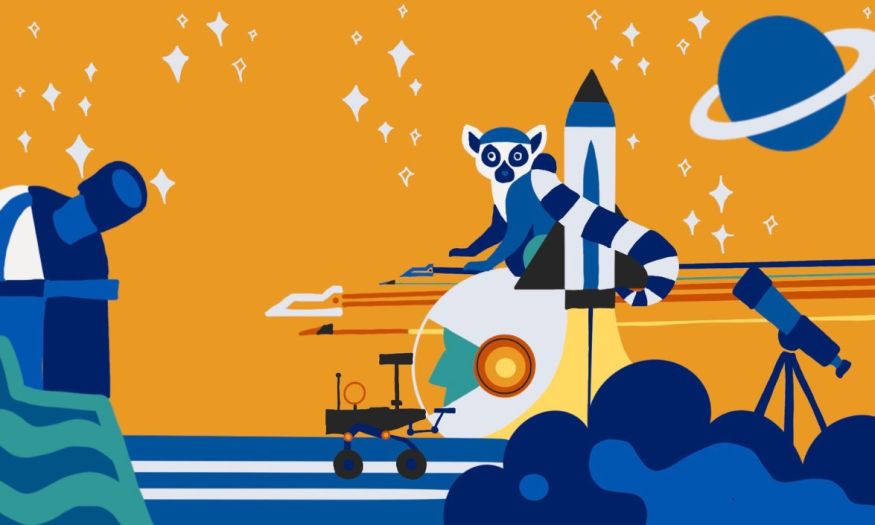
At the forefront of groundbreaking research, Ana Breit is exploring the potential of lemurs to revolutionize human space travel. Her journey began with a focus on body temperature regulation and hibernation, initially studying bats. Now, as a research scientist at the Duke Lemur Center, she investigates the hibernation patterns of Malagasy fat-tailed dwarf lemurs. “Being able to study hibernation in the closest relatives to humans able to hibernate is an incredible opportunity,” said Breit. Alongside her colleagues, she secured a $30,000 NC Biotech Flash Grant to study hibernation at warmer temperatures.
The concept of “synthetic hibernation” in humans, often depicted in science fiction, presents numerous health challenges, including cognitive decline. To preserve cognitive function, inducing hibernation at warmer temperatures is crucial, and lemurs may hold the key.
The Role of Lemurs in Hibernation Research
The Duke Lemur Center houses the only colony of fat-tailed dwarf lemurs in human care. All research conducted is non-invasive, utilizing state-of-the-art hibernacula rooms that simulate Madagascar’s light cycles. These rooms allow researchers to control ambient temperature, providing insights into how lemurs adapt to seasonal changes. Respirometry equipment measures metabolism, while radio collars track skin temperature.
Researchers hypothesize that hibernating at warm temperatures—warm enough to maintain homeostasis and cognitive function, yet cool enough to conserve energy—is essential for long-duration space missions. Hibernation in space could reduce food and oxygen requirements, prevent muscle and bone deterioration, and alleviate boredom during extended voyages.
Historical Context and Scientific Foundations
While hibernation has been extensively studied in rodents, it was not until 2004 that German researchers documented hibernation in a primate: the fat-tailed dwarf lemur. These lemurs can hibernate for up to seven months, storing fat in their tails, which can comprise 40% of their body weight. Breit’s research compares lemurs exposed to extreme temperature fluctuations with those in stable environments. This comparison reveals that lemurs experiencing temperature swings can passively rewarm, conserving energy, while those in stable conditions must actively rewarm, expending more energy.
Comparing Lemur Populations and Cognitive Testing
Breit is also examining how hibernation affects immune function and inflammatory responses. Collaborating with researchers nationwide, she aims to determine whether these processes shut down during hibernation, which could inform human applications. To validate lab findings, a concurrent field study in Madagascar, led by PhD student Antonin Andriamahaihavana, observes wild lemurs in their natural habitat, ensuring the research reflects authentic behavior.
Cognitive testing is another critical aspect of the study. Dr. Brendan Johnson, a DLC veterinarian and primate cognition researcher, leads memory and problem-solving tests. Lemurs are given puzzles to solve, motivated by treats like craisins. These tests, repeated post-hibernation, assess changes in cognitive function, addressing the question: “After astronauts wake up, are they still able to drive the spacecraft?”
Building on a Legacy of Research
Breit’s work builds on the foundational research of previous Lemur Center scientists. The established infrastructure and data enable her to pose high-impact questions and expand the scope of inquiry. “If they hadn’t started the hibernation program here, I wouldn’t be able to conduct the research that I do,” Breit noted. “It allows me to build off questions they’ve already asked. And I can add different layers to it that make it even stronger.”
Implications for the Future of Space Exploration
Breit’s research, rooted in a fascination with body temperature, has evolved into a mission to help humans sleep their way to the stars. Guided by the rhythms of tropical lemurs, the precision of modern science, and the power of interdisciplinary collaboration, her work could pave the way for a new era of space exploration.
As the scientific community continues to explore the potential of hibernation in space travel, the insights gained from lemurs may hold the key to overcoming the challenges of long-duration missions. The implications of this research extend beyond the confines of the laboratory, offering a glimpse into a future where humans could journey to distant stars, aided by the lessons learned from our closest hibernating relatives.






